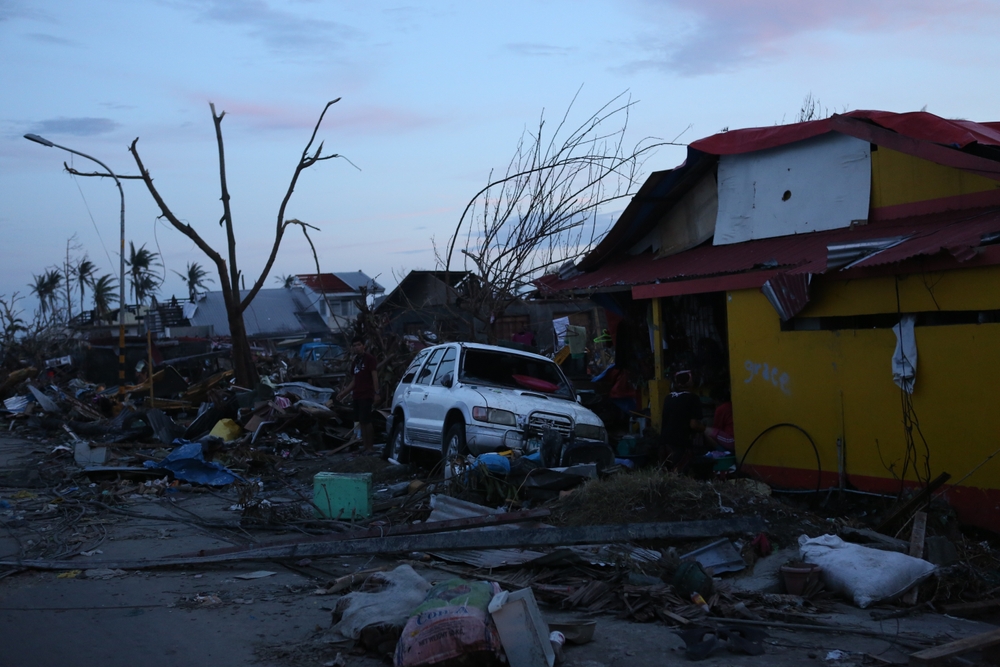A ferocious storm has hit the Philippines after being upgraded to a super typhoon. Authorities are warning of “life-threatening conditions” as the system moves toward the country’s largest island.
Bicol Feels the Full Force of the Typhoon
Typhoon Fung Wong, with sustained winds reaching 185 km/h, is pounding several regions with intense rain, according to the weather agency Pagasa. The eastern Bicol region was first to feel its full impact on Sunday morning. Luzon, home to millions, is expected to experience the storm’s wrath by nightfall.
Locally called Uwan, the typhoon comes just days after Kalmaegi devastated parts of the Philippines, killing nearly 200 people. Schools have suspended classes or switched to online lessons, while Philippine Airlines cancelled several domestic flights ahead of the storm’s arrival.
Pagasa said Fung Wong may weaken after landfall but will likely remain a typhoon as it crosses Luzon. Eastern areas have already been hit by fierce winds and heavy downpours since Saturday evening.
Thousands Flee Homes as Coasts Brace for Impact
Officials urged residents in low-lying and coastal communities to evacuate early. On Catanduanes Island in the Bicol region, conditions turned extreme by Sunday morning.
In Aurora province, 21-year-old hotel worker Hagunoy said police repeatedly checked that all beach hotels were evacuated. By Sunday morning, the coast was deserted as locals prepared for impact expected around midnight.
The tide rose sharply throughout the day. Hagunoy said he would stay to protect the property for as long as possible before escaping on his motorbike. Staff tied windows with ropes and reinforced gates to keep them from breaking under the powerful winds.
Rescue Work Suspended After Deadly Kalmaegi Storm
Fung Wong has halted rescue operations that were still underway after Typhoon Kalmaegi, one of this year’s strongest storms. Torrential rain sent rivers of mud crashing through homes and streets. Entire neighborhoods were washed away by flash floods.
At least 204 people have been confirmed dead, with more than 100 still missing. In Vietnam, five people were also killed as the storm’s remnants uprooted trees, tore off roofs, and smashed windows.
Government Declares Nationwide Emergency
The Philippine government declared a state of calamity following Kalmaegi’s devastation and to prepare for Fung Wong’s impact. The measure allows quicker access to emergency funds and speeds up the delivery of aid and essential supplies.
Many survivors of Kalmaegi say they are still haunted by its destruction. “We decided to evacuate because the last typhoon flooded our house. I just want my family safe,” said Norlito Dugan, who is now taking shelter in a church in Sorsogon, Luzon.
Another evacuee, Maxine Dugan, said: “The waves near my home are enormous. I live near the shore. The winds are getting stronger, and the sea keeps rising.”
Climate Change Intensifies Pacific Typhoons
The Philippines lies directly in the path of Pacific storms, making it one of the world’s most disaster-prone countries. About 20 tropical cyclones form in the region each year, and around half strike the country.
Scientists say climate change may not create more storms, but it makes existing ones stronger. Warmer ocean waters and higher air temperatures can increase wind speeds, intensify rainfall, and heighten the risk of catastrophic coastal flooding.


